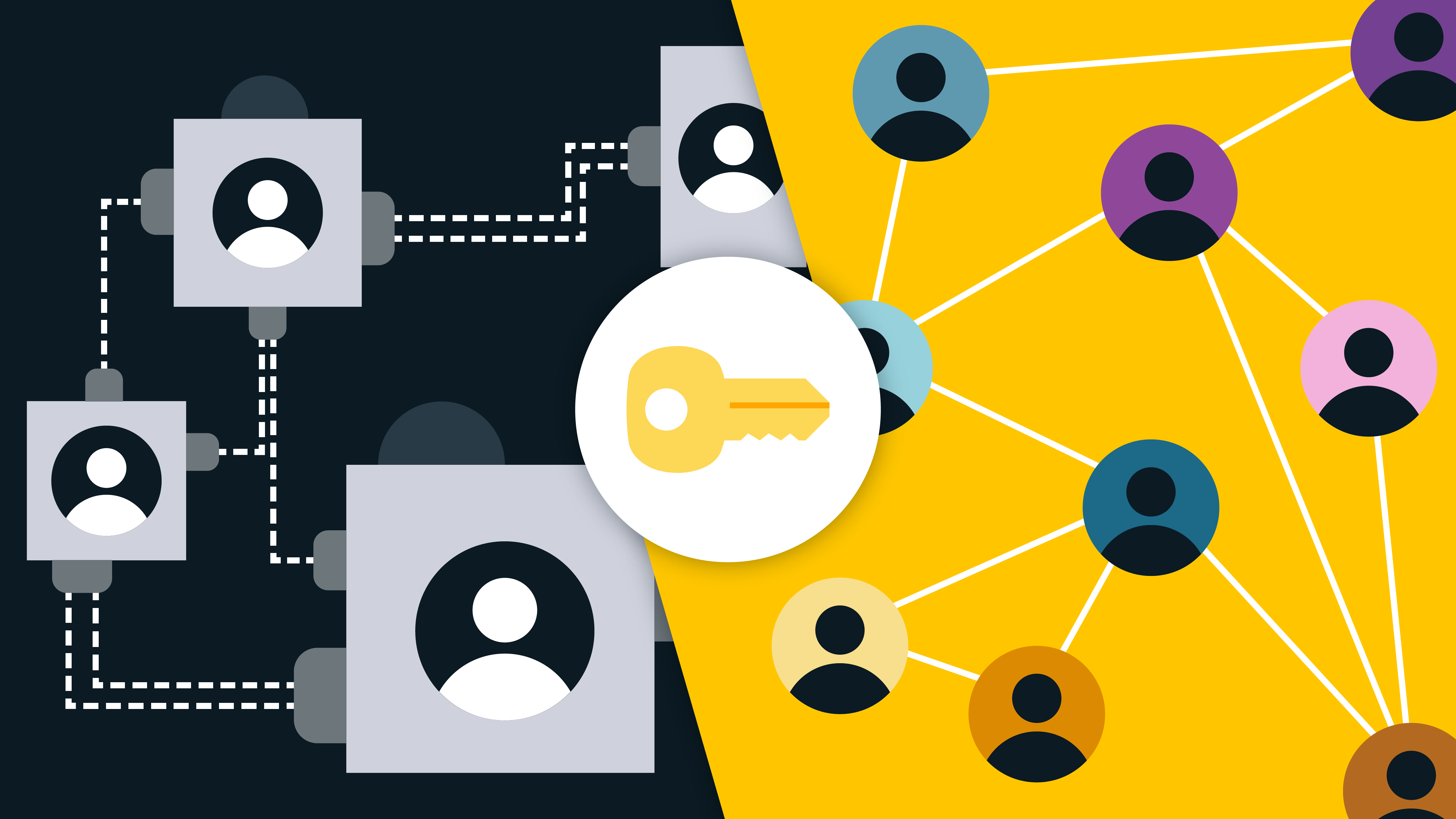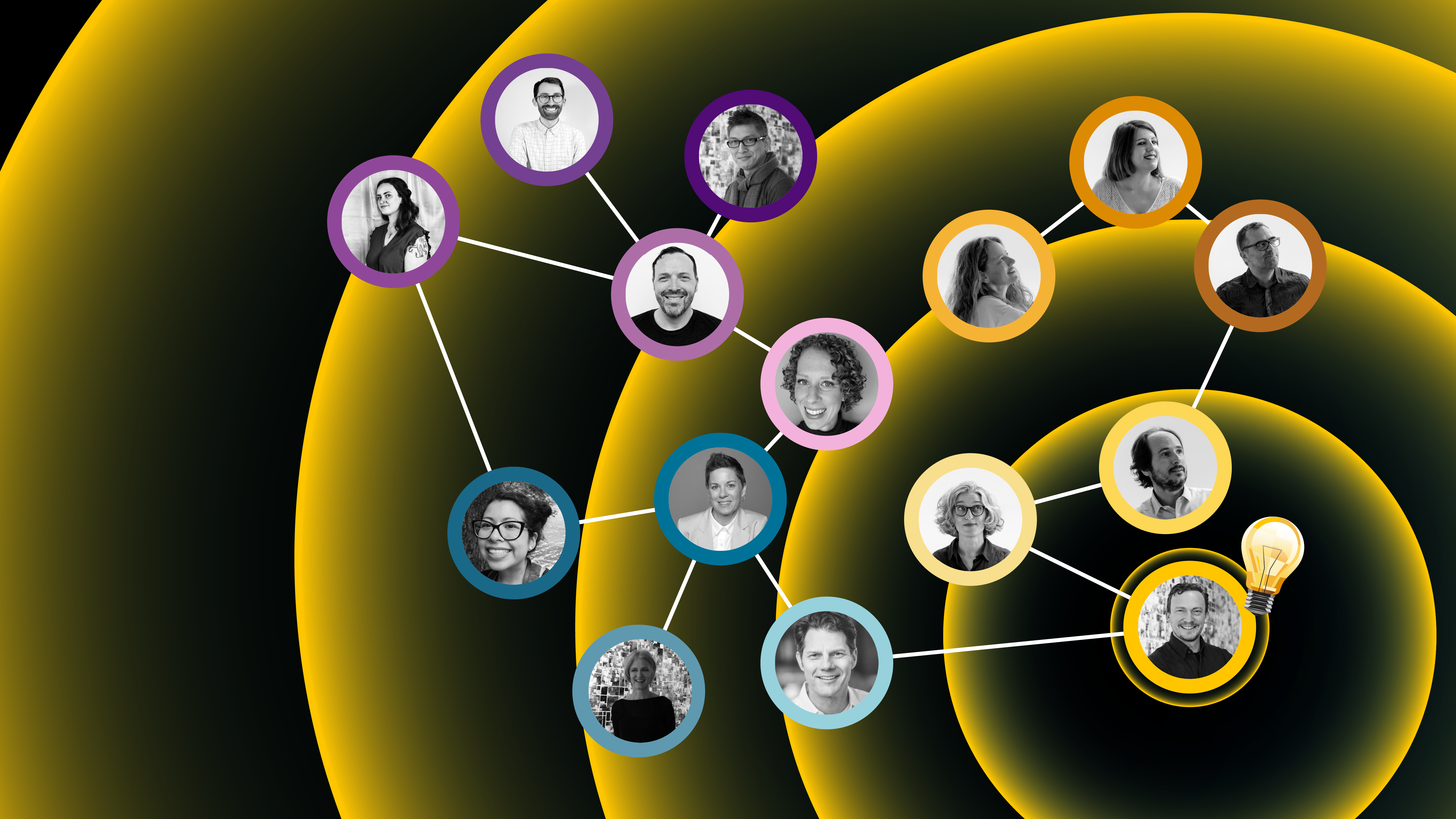This interview was conducted by Chuck Frey and was originally published in the NEXT/EDGE newsletter.
Cultivate these skills to contribute more value in remote and hybrid work environments.
In the 1990s, XPLANE founder Dave Gray became known as a pioneer in information graphics – helping media companies and organizations communicate complex topics visually. Today, the company utilizes visual thinking, design thinking and management consulting practices to help organizations envision the future, design the path to get there and bring their vision to life. Enabling positive change is baked into its DNA.
That’s why I asked XPLANE CEO Aric Wood to share his insights into the disruptive changes we’re all living through and how you can prepare for what’s next.
Chuck Frey: Even before the pandemic hit, XPLANE was already doing a lot of research into what a thriving virtual workplace could look like. And obviously, COVID accelerated a lot of that. There’s also been a lot of discontinuous change. What surprised you the most about the changes that have actually happened because of the pandemic?
Aric Wood: It’s really interesting how it played out. We went into it thinking we knew a lot about it. At XPLANE, we’ve been working as a largely remote workforce for years. But we always had an office to go a couple of days a week, where casual connections with coworkers could occur. Having to suddenly move to completely remote work was a rude awakening for many organizations, including ours. We suddenly had to figure out new ways to collaborate and get work done. But the pandemic also proved that the impossible was possible. In other words, we could be productive without physical offices, without business travel.
But the biggest surprise for me was how much we cherished face-to-face connection when we were suddenly deprived of it completely. Morale and culture took a hit because we’re no longer able to have those informal meetings and hallway conversations that we all took for granted when we were working in offices. You can’t easily recreate those random connections on a Zoom call.
One of the big questions we’re thinking about is how can we have the best of both worlds? How can we provide our people with a flexible home/office workplace but also have that human-to-human connection that plays a key role in our level of satisfaction and engagement with our work?
Frey: What do you think savvy workers need to do now to be successful in this new post-COVID work world? Are there some skills that they need to be developing?
Wood: Two of them come to mind. The first is that you need to learn how to be disciplined about taking care of yourself – your wellness, your mental health. As remote workers, we’re much more empowered to manage our schedules. As a result, work tends to time-shift into an always-on mentality. Of course, we also have other in-home responsibilities like parenting and eldercare. They’re competing for the same time and attention.
The other critical skill you need to develop is working out loud. The best way to understand what that means is to think back to the way we worked before the pandemic. Every day, we had many ambient connections with coworkers – in hallways, cafeterias, chatting outside someone’s cubicle or in a common area of the office. It was a big part of how we shared information casually about what we were working on. And it was often where big ideas came from.
Now that’s gone, for the most part. If you’re working remotely, you usually only have contact with your direct manager and team members – almost all of it through formal, scheduled meetings. We need to make a bigger commitment to actively and mindfully sharing information about what we’re working on, to create those informal opportunities for idea-sharing. Whether that’s using tools like Slack or scheduling informal time with others, we need to work out loud so that others can see what we see.
Frey: What are the roles of visual thinking and collaboration skills being in today’s work environment? And how can ambitious executives develop their skills in these areas?
Wood: Remote work has made asynchronous work (the ability to collaborate in a shared workspace without everyone needing to be online at the same time) a necessary reality. It’s also brought to the forefront new tools like MURAL and Miro that enable teams to share ideas and think together. And it has set the stage for visual thinking and techniques like design thinking to have a bigger role in our work. You can’t communicate as much information in an email or Slack message as you can if you draw it out or diagram it and have people react to it in real-time.
To develop visual thinking skills, the first thing I recommend you do is to buy a sketchbook and take visual notes by hand. Drawing and sketching build a stronger connection between the hand and the mind. And it’s scientifically backed: We know that writing notes helps you retain information at almost triple the rate of typing your notes. Adding visuals to those handwritten notes doubles or triples that level of understanding and retention yet again.
By capturing your notes visually, you’ll not only retain information better and more effectively, but you’ll also train your brain to think visually. Then, when you use MURAL, Miro, or other visual tools, you’ll be more adept at thinking and working in that way. So, buy a sketchbook and capture your notes and ideas visually. Whether you think your drawings and diagrams are ugly or not, this practice is going to make a huge difference.
Frey: How else can someone become a more savvy visual thinker? What resources do you recommend?
Wood: Look for courses that can teach you visual thinking strategies and techniques. My firm, XPLANE, offers them. I also recommend Duarte Design. There’s also a huge amount of content available online from some excellent thought leaders that can help you become a better visual thinker. Online galleries of visual content also help, by showing you what others are doing and what’s possible.
Frey: Looking ahead into the next one or two years, what do you think the biggest opportunities will be in organizational change? What moves should savvy executives make now to prepare, to make sure that they’re ready for the next big leap?
Wood: This may be taking this question in a different direction, but I think leaders and managers need to focus on improving employee engagement and retention. We’re already seeing that the rules of employment have been rewritten. A growing number of people are looking for new opportunities and are changing jobs today. Others are leaving because they’re getting burned out. People are looking for new opportunities. Knowledge workers have more workplace flexibility than they ever had before. But we haven’t cracked the nut on how to build an engaging culture in a hybrid work world to keep them engaged and retain them.
What’s next? We need to figure out how to how to reframe and refocus on the soft stuff in our businesses. Things like how do we get the culture right? How do we help make people feel engaged, even though they’re remote? How do we support them in their job growth? I predict in the next 12 months, we’re going to see a lot of experimentation and innovation. Best practices will start to emerge very quickly, as companies fight to retain their best talent. And I think we’re going to see some huge shifts in how companies build culture in a remote and hybrid work world.
If you’d like to subscribe to the NEXT/EDGE newsletter, click here.
And for additional resources about culture and collaboration, check out the following from XPLANE:

Changing Change Management: The Shift from Process-Centered to People-Centered
Developed in a bygone era, traditional business models—such as change management—are trailing the era in which we live today. To succeed at change within the

Seven Principles and Five Steps to Confidently Lead Organizational Change
In today’s world of unrelenting change, organizations and leaders that will thrive are those mindfully building core capabilities around change. Want to enhance your change

Four Steps to Drive Positive Organizational Change
When it comes to change, does your organization have a fairly good grip on things or does it feel more like you’re on Mr. Toad’s Wild Ride? No matter where you are today, you can learn to drive change to the fantastic future you envision. Here’s how.
